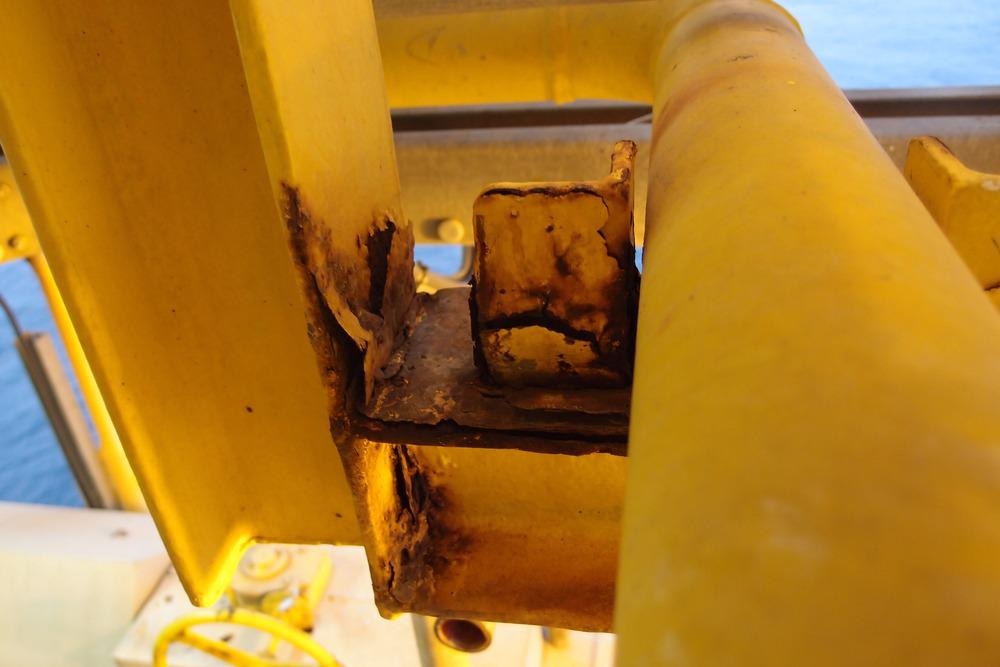A team of researchers from Belgium and the Netherlands have proposed a novel approach to numerically predicting and studying the influence of droplet size on atmospheric corrosion. Currently in the pre-proof stage of publication, the paper will appear in the journal Corrosion Science.

Study: Predicting the effect of droplet geometry and size distribution on atmospheric corrosion. Image Credit: UKTechnical/Shutterstock.com
Background to the Research
Atmospheric corrosion is a complex phenomenon. The process takes a long time, and definitively linking corrosion to environmental phenomena and mechanics is challenging. Corrosion kinetics can differ vastly between initial and long-term exposure.
However, elucidating accurate information on corrosion mechanics and behavior is essential for designing materials that will be exposed to atmospheric conditions, such as temperature, icing events, rain, and the presence of corrosive industrial chemicals.
Accelerated tests are used to overcome the long timescales that atmospheric corrosion occurs over. These tests provide early information on the corrosion resistance of materials used in industries such as construction, the automobile industry, and the aerospace sector. Additionally, accelerated corrosion tests can be employed to evaluate the efficacy of protective coatings.
Whilst accelerated tests overcome the issues of timescale and provide rapid analysis of corrosion behavior in materials, it is difficult to correlate corrosion behavior in the laboratory with real-world conditions. This is a problem as the performance evaluation of corrosion resistance strongly depends on selected standards.
There are a lot of unknowns when it comes to these types of tests, even when standards are used to describe them. Several dynamic factors can influence the corrosion rate of materials, such as the electrolyte’s nature, environmental conditions, and corrosion products. This makes it difficult to accurately construct a full description of the processes over time. Several studies have attempted to approach the problem and elucidate relevant information on real-world processes using accelerated testing.
For instance, studies have investigated electrolyte geometry and formation, both experimentally and using numerical models. Other studies have analyzed corrosion behavior in simulated seawater layers using beam electrodes. Corrosion monitors have been used during cyclic testing. Other studies have observed significant differences between identical tests in different labs and climate chambers, further demonstrating the challenging nature of accurately determining real-world corrosion behavior in accelerated laboratory tests.
Due to the challenges faced by researchers currently, there is a growing need for approaches that can accurately model and determine real-world atmospheric corrosion and the influence of environmental factors upon the corrosion resistance of materials.
The Study
Several previous studies have demonstrated the influence of droplet dynamics. Several approaches have been investigated in the current literature, which has highlighted the complex nature of the problem. Droplet sizes are dependent on several factors, such as material roughness, composition of electrolytes, deposition type, and deposition rate. The problem requires an interdisciplinary approach to elucidate accurate and reliable information.
More from AZoM: Which Alloys Are Prone to Corrosion, and How Can We Prevent This?
A key parameter that could explain why observations of corrosion behavior differ between identical accelerated tests in different cabinets could be, according to the authors, the dropwise difference in the quantity, distribution, and shape of electrolytes. Moreover, correlating environmental exposure tests and accelerated tests will improve the reliability and interpretation of experimental results and, thus, improve standards in accelerated atmospheric corrosion testing.
The present study proposes a new approach, facilitating the accurate assessment of droplet influence. The authors have aimed to accurately model droplet size distribution and better evaluate atmospheric corrosion, improving on previous accelerated test attempts.
The authors split the problem into two parts: corrosion caused by single droplets, and corrosion resulting from droplets with different distributions and contact angles. No assumptions were made about droplet origin. Both scenarios have been investigated thoroughly in the research, and corrosion rates have been compared for different droplet sizes and geometries. Electrochemistry, mass transport, and distribution shift are amongst the factors modeled in the research.
By combining droplet size distributions with average corrosion current densities of single droplets, finite results for the size distribution of single droplets and imposed droplet size distributions can be combined. Both these factors are highly time-dependent and are strongly coupled phenomena. Additionally, the authors have stated that the research illustrates that an understanding of droplet density is crucial for making accurate predictions of corrosion behavior.
Another key parameter, especially for single droplets, is the covered area. Additionally, increasing contact angle whilst retaining a constant volume of electrolyte drastically reduces material loss. Material loss after one year in different materials was evaluated in the study. The authors noted that droplet size distributions will evolve over time in real-world conditions, and a main limitation of the approach proposed in the study is the single droplet’s steady-state nature. Additional time dependency, whilst desirable, will add complexity to models.
In conclusion, the proposed model provides a deeper understanding of the differences between experiments and accelerated tests. The authors have stated that relevant experimental data will be introduced into the model from accelerated tests in future work.
Further Reading
Van den Steen, N et al. (2022) Predicting the effect of droplet geometry and size distribution on atmospheric corrosion Corrosion Science 110308 [online, pre-proof] sciencedirect.com. Available at: https://www.sciencedirect.com/science/article/abs/pii/S0010938X22002268
Disclaimer: The views expressed here are those of the author expressed in their private capacity and do not necessarily represent the views of AZoM.com Limited T/A AZoNetwork the owner and operator of this website. This disclaimer forms part of the Terms and conditions of use of this website.